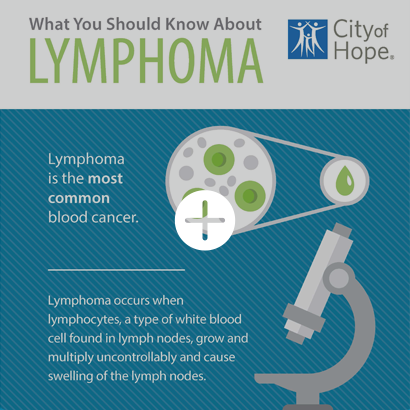

This page was reviewed under our medical and editorial policy by
Maurie Markman, MD, President, Medicine & Science
This page was updated on May 26, 2022.
Hodgkin lymphoma symptoms are typically non-specific and share many characteristics with other illnesses, such as a cold, the flu, other types of respiratory infection and other types of blood cancer. The Hodgkin lymphoma stages may not cause any symptoms.
When symptoms do occur, a common early sign of Hodgkin lymphoma is swelling in one or more lymph nodes, usually in the neck. There are over 500 lymph nodes throughout the body, all connected through a network of lymph vessels. Clusters of lymph nodes can be found in the neck, armpits, groin, abdomen, pelvis and chest. Lymph nodes circulate white blood cells. When the concentration of white blood cells increases as part of the body's immune response to a virus or infection, enlarged lymph nodes may result. In some cases, the swelling is caused by another condition, like cancer.
Common symptoms of Hodgkin lymphoma include:
Part of staging Hodgkin lymphoma requires determining whether certain B symptoms are present, which may factor into the overall prognosis and may be signs of more advanced disease. Those B symptoms are:
These symptoms don't necessarily indicate a Hodgkin lymphoma diagnosis. If the patient has any of the symptoms above, a doctor will perform further testing to evaluate the cause. These may include blood tests to evaluate lymphocytes, as well as a biopsy, a physical exam and/or imaging tests.

Download lymphoma infographic »
Next topic: What are the types of Hodgkin lymphoma?